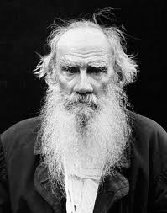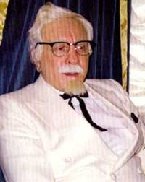
Instant coffee is a beverage derived from brewed coffee beans that enables people to quickly prepare hot coffee by adding hot water or milk to coffee solids in powdered or crystallized form and stirring. Instant coffee solids (also called soluble coffee, coffee crystals, coffee powder, or powdered coffee) refers to the dehydrated and packaged solids available at retail used to make instant coffee. Instant coffee solids are commercially prepared by either freeze-drying or spray drying, after which it can be rehydrated. Instant coffee in a concentrated liquid form, as a beverage, is also manufactured.
Advantages of instant coffee include speed of preparation (instant coffee dissolves quickly in hot water), lower shipping weight and volume than beans or ground coffee (to prepare the same amount of beverage), and long shelf life—though instant coffee can spoil if not kept dry. Instant coffee also reduces cleanup since there are no coffee grounds, and at least one study has found that it has a lower environmental footprint than drip filter coffee and capsule espresso coffee, on a prepared beverage basis, disregarding quality and appeal of the beverage produced.
Instant or soluble coffee was invented and patented in 1890, by David Strang of Invercargill, New Zealand, under patent number 3518 sold under the trading name Strang's Coffee citing the patented "Dry Hot-Air" process. Some modern sources have credited French humorist and writer Alphonse Allais with the invention.
The invention was previously attributed to Satori Kato, a Japanese scientist working in Chicago in 1901. Kato introduced the powdered substance in Buffalo, New York, at the Pan-American Exposition. George Constant Louis Washington developed his own instant coffee process shortly thereafter, and first marketed it commercially (1910). The Nescafé brand, which introduced a more advanced coffee refining process, was launched in 1938.
High-vacuum freeze-dried coffee was developed shortly after World War II, as an indirect result of wartime research into other areas. The National Research Corporation (NRC) was formed in Massachusetts as a process-development company employing high-vacuum technology. It developed high-vacuum processes to produce penicillin, blood plasma, and streptomycin for US military use. As the war ended, NRC looked to adapt its processes for peacetime uses. It formed Florida Foods Corporation to produce concentrated orange juice powder and originally sold its product to the United States Army. That company later changed its name to Minute Maid.
A concentrated coffee/milk/sugar mixture was produced for the Union army during the American Civil War under the name Essence of Coffee, a teaspoonful of which was mixed with a cup of hot water. It had the consistency of axle grease, and proved so unpopular with the troops that it was soon discontinued. The brand Camp Coffee, a coffee and chicory essence, was first produced in 1876 by Paterson & Sons Ltd in Scotland.
Instant coffee is available in powder or granulated form contained in glass and plastic jars, sachets, or tins. The user controls the strength of the resulting product by adding less or more powder or granules to the water.
Instant coffee is also convenient for preparing iced coffee like the Greek frappé.
In some countries, such as Portugal, Spain, and India, instant coffee is commonly mixed with hot milk instead of boiling water. In other countries, such as South Korea, instant coffee commonly comes pre-mixed with non-dairy creamer and sugar and is called "coffee mix". Said to have been popularized in the UK by GIs during World War II, instant coffee still accounts for over 75 percent of coffee bought to drink in British homes, as opposed to well under 10 percent in the U.S. and France and one percent in Italy.
In the United Kingdom, instant coffee granules are sometimes used to enhance the flavour of sauces used in preparing spaghetti Bolognese.
If you want to read a lot more about instant coffee, go here;
Simple and satisfying, our Unforgettable Chicken Casserole has that cozy-comfort taste and texture that will make for a memorable meal. Using readily available ingredients, in just 30 minutes oven time, you'll have a chicken casserole recipe that'll stick in everyone's mind!
This delicious creamy chicken casserole recipe is a favorite for several reasons. First of all, it tastes amazing! With plenty of cheese and rich ingredients like mayo and sour cream, this casserole recipe is indulgent in all the best ways. Second, it's a perfect recipe to feed a hungry family. It makes plenty of servings, and leftovers taste great (if there are any). This is one of those meals that will make leftover night something that everyone actually looks forward to!
Enjoy this cheesy chicken casserole with your family this week. You'll be happy you did!
- 3 cups chopped cooked chicken
- 2 cups finely chopped celery
- 1 cup (4 ounces) shredded Cheddar cheese
- 1 cup sour cream
- 1 cup mayonnaise
- 1 (4-ounce) can water chestnuts, drained and chopped
- 1 (10-3/4-ounce) can cream of chicken soup
- 1/2 cup slivered almonds
- 1 (6-ounce) can French-fried onion rings
- Preheat oven to 350º. Coat a 9- x 13-inch baking dish with cooking spray.
- In a large bowl, stir together chicken, celery, cheese, sour cream, mayonnaise, water chestnuts, soup, and almonds. Spoon into prepared baking dish.
- Bake, uncovered, for 30 minutes. Sprinkle onion rings evenly over top and bake 5 more minutes, or until bubbly around edges. Let stand 5 to 10 minutes before serving.
1923 – Cliff Robertson, American actor (d.2011)


1951 – Tom Wopat, American actor and singer
1952 – Angela Cartwright, American actress
















